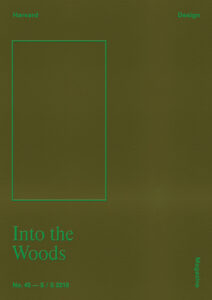The Politics of the Rhizosphere
Next time you walk through a forest, look down. A city lies under your feet. If you were somehow to descend into the earth, you would find yourself surrounded by the cityís architecture of webs and filaments. Fungi make those webs as they interact with the roots of trees, forming joint structures of fungus and root called mycorrhizae.
— Anna Tsing, “Arts of Inclusion, or How to Love a Mushroom”
Rosetta Elkin
You teach and study anthropology, yet your research touches on nonhuman agency within science, politics, and capitalism, framed in the universalizing tone of the Anthropocene. I’d like to start by talking about how your work conceives of the forest as a city beneath our feet. For instance, in your 2015 book, The Mushroom at the End of the World: On the Possibility of Life in Capitalist Ruins, your vivid descriptions of the forest floor appeal for a consideration of growth and life beyond the human by describing the underground mycorrhizal relationships between matsutake mushrooms—one of the world’s most sought-after fungi—Japanese pine trees, and industrial practices. How do you get a closer look at these relationships when you are working in the field?
Anna Tsing
You have to go underground. Under the ground, the social relations of plants and of fungi are at their most active and visible. If you want to see what I call “the city,” a dynamic scene where all kinds of organisms are working together, you canít stay above ground. When I was writing The Mushroom at the End of the World—an investigation into the matsutake’s ability to survive even in human-disturbed environments—I assumed that you needed complex skills and microscopes to see that underground world. What I didn’t realize is that you can learn a whole lot about the social life of fungi and trees with your own eyes and nose. Trees and fungi together form underground structures called ectomycorrhizas in which the fungi wrap around the roots. Matsutake mushrooms form these kinds of symbiotic relations; they make it possible for surrounding trees to forage for water in a lot more places, and they bring nutrients in. This interaction forms a cross-species world underground. And it turns out you can see it.
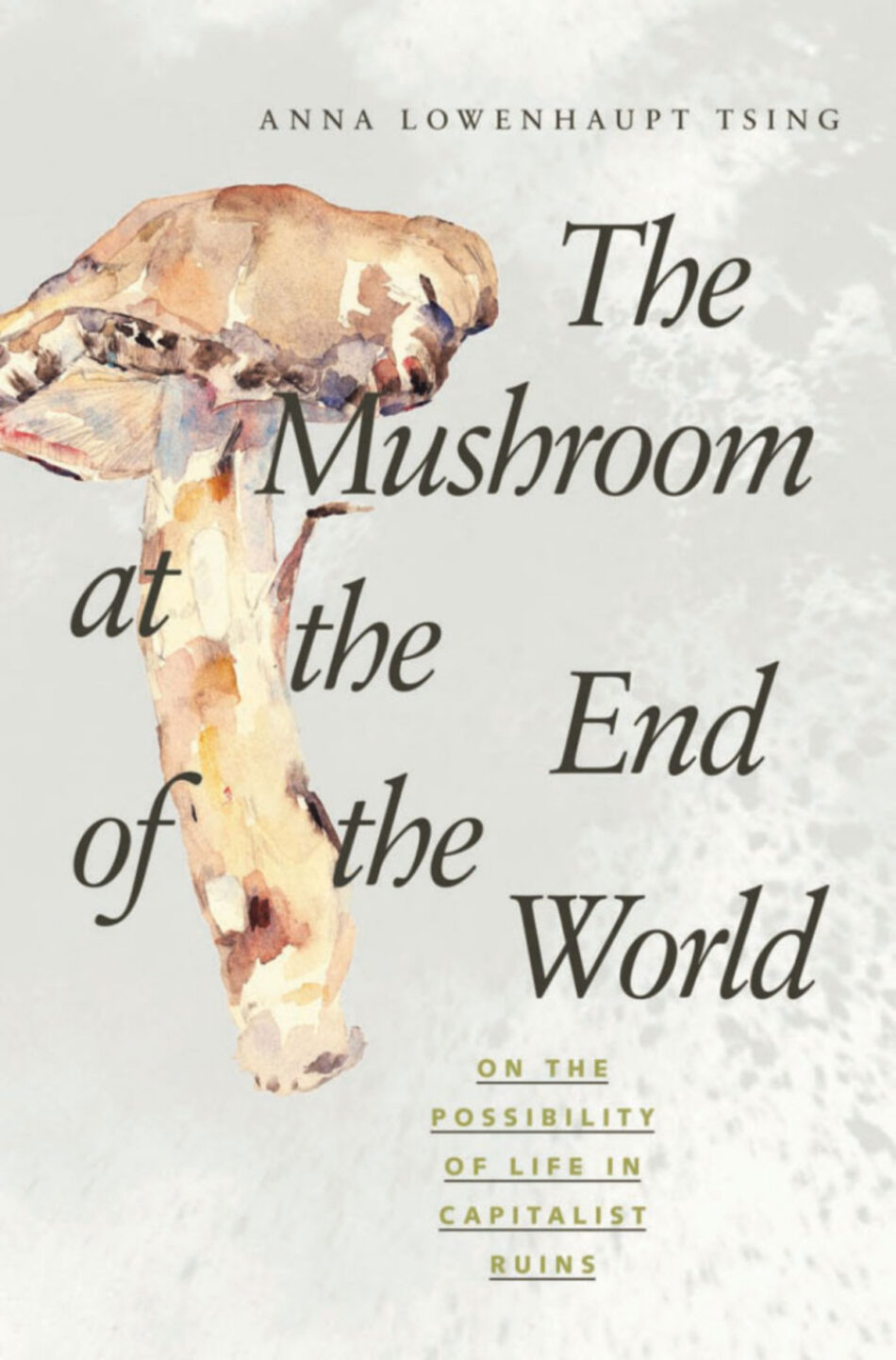
RE
What is fascinating from the perspective of both the plant and the mycorrhizas is that there are no distinct lines or boundaries between the soil, roots, and fungi. Roots work entirely within a substrate of forces inviting or repelling collaboration, as you reveal in the lively networks you study. The root zone is a concealed swarm of life and activity; perhaps more than an image of companion species, this is a fusion of species. To what extent are you conscious of the interspecies collaboration you are creating through your engagement with and study of them?
AT
To me, itís a kind of attunement, a way of making my body and the body of roots and fungi align for just a little bit. Many scholars are interested in the consciousness and communications of other organisms, and there’s nothing wrong with that, but I think there’s more that we can do to bring ourselves into the worlds of other species. We can begin to experience what their social life and livelihood activities are all about.
After writing The Mushroom at the End of the World, I started working on fungi living with pine trees in a former lignite, or brown coal, mine in Denmark. The mine has left these sand piles and rather acidic lakes. Most of the trees in the sand dunes are lodgepole pines, an American species imported to Denmark because it is so fast-growing. While some were planted, many more came up themselves. It turned out to be a good place to learn about root and fungal attunements.
The great thing about working in sand is, unlike clay, it doesn’t stick to the root. You can pull a root out of the ground and, after a quick dip in water, you can see the mycorrhizal structures. So, I could see that pine roots were working with fungi to make a characteristic Y shape. Occasionally, there are birch roots or other kinds of broadleaf trees in this place, but their roots look different. You can tell you are looking at pine roots by the characteristic Ys of the short roots, made for engagement with fungi. If you touch, look, and smell the root-fungus complex, you can see the life-forms roots and fungi make together. Together, they make trees stronger. Trees are able to make forests because they have fungal partners that are helping them. Seeing this fusion also allows you to appreciate how beautiful and different each set of interspecies interactions is. Even with one plant—lodgepole pine, for example—the root-fungus interaction brings something quite different with each fungal species. Paxillus and pine make fat, white fingers; Pisolithus and pine instead make dense, yellow mats. A new world has emerged for me since Iíve been able to appreciate the rhizosphere as a space of interspecies sociology.
RE
The nuances of these different interactions are exactly what is at stake in design fields that rely on industrial processes that objectify plants as units. They completely ignore that the rhizosphere is a busy social space and instead treat the soil as an inert medium or a physical support in which to insert the “tree object.” Can we examine an argument of how to quell the relentless profit motives that seem to invade and characterize every domain, every question, as every issue becomes a problem to be solved?
AT
I might think about the plantation as an ecological form. Donna Haraway came up with the word “Plantationocene” to describe the world that’s been created by this kind of violent ecological simplification. You might think of New World plantations after the invasion of Europeans as the model, where you had displaced, coerced, and violently brought-in labor, and displaced, coerced, and violently disciplined plants. You put these together, and all kinds of terrifying ecological effects are created. One of the ecological effects is the ability to get a profit for distant investors who don’t have to see what a mess they’re making on the ground. The plantation also nurtures another ecology—it becomes a nursery for all kinds of plant pathogens that spread off the plantation into the world.
That’s why we were playing with this term “Plantationocene,” because the plantation form has many effects beyond the plantation itself. A lot of scholars have argued that the plantation historically helped to create industrial capitalism. According to anthropologist Sidney Mintz, who studied the history of sugar-cane plantations in the Caribbean, factories were modeled on the disciplines of the plantation. Enslaved workers, forced into inhuman coordinations, formed a model for factory workers. According to historian Sven Beckert, the cotton plantation helped develop industrial capitalism; it generated the easy profits that allowed industrial capitalist technologies. So, the plantation is a big piece of the story, the consequences of which we’re living out today.
A lot of plants can be disciplined to react, to behave as industrial resources. For example, cotton is a perennial, but it is treated in plantations like an annual for the purposes of disciplining labor. It’s treated that way in part because of the conditions of enslavement of Africans who were brought to tend it. They were treated as machines, basically. It is under those conditions that cotton went from being one kind of
plant to being a different kind of plant. So, you can see how plants can be brought into line as industrial resources.
RE
The story of pokeweed offers a nice counterpoint to your account of cotton plantations. Pokeweed has large, edible, spinachy leaves. In early cotton plantations, pokeweed appeared to “poke up” wherever it felt like it, and people working the fields would eat the pokeweed because it was nutritious. Imperialists noticed and tried growing it—they planted it in rows to contain it—and then sought to distribute it as foodstuffs. But pokeweed, true to its name, resists lines. It didn’t want to grow in plantations; it resisted. Now it is labeled as a weed, and, of course, we no longer eat it because it was so hard to force it into yield metrics. Yield metrics and scale relate because cartographic scales tend to be linear and relational, which is essentially a type of translation. Yet, what sets landscape architecture apart from planning, from real estate, from architecture, from urban design, is that we actually work with living material, living matter. This is the uncontrollable and sometimes beautifully unpredictable part of what we do. My colleagues and I often debate this notion of scale, because thereís just no linear scale that can attend to living matter. How do the subjects you study resist scale?
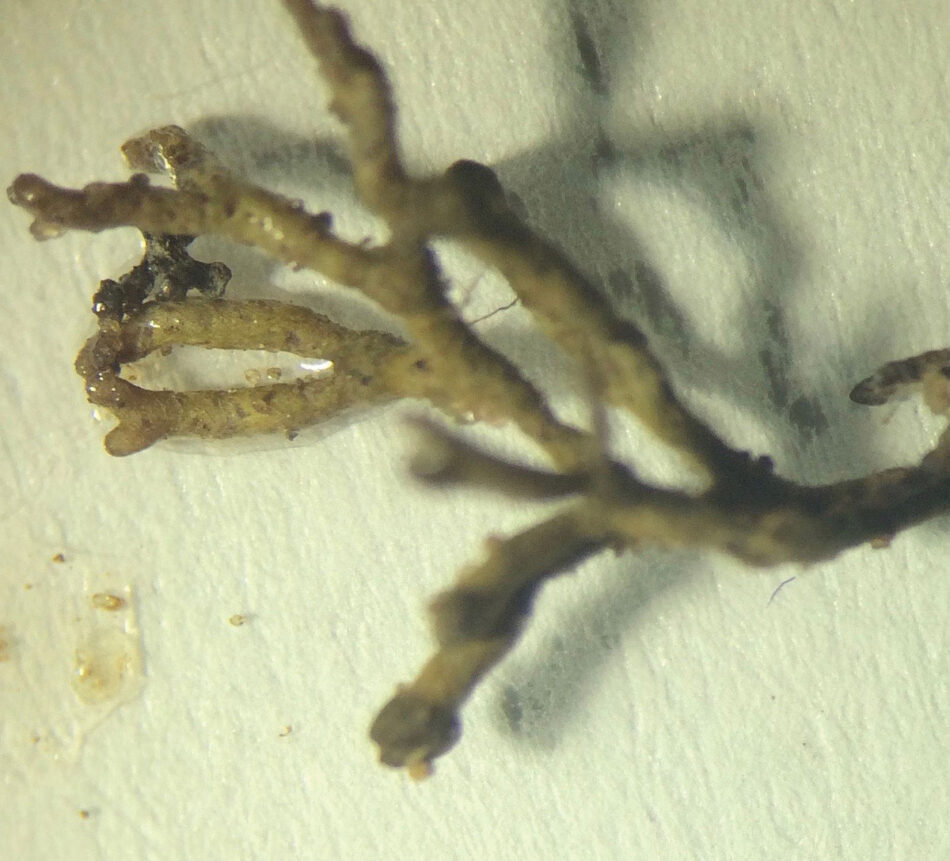
AT
They don’t resist scale. They resist scalability. That is, the ability to “scale up” without changing in any significant way. Here, relations don’t matter. Instead of relations changing the nature of what’s going on, relations are barricaded from that change. That’s the only way you can get things to scale up in a linear fashion. Without that, you get a phenomenon changing through its relations, and that is non-scalability. So, something like plants and their soils and their symbionts would be a good example of something where relations change the nature of what’s going on.
Scaling up for industrial production can get in the way of the relations of life. For example, I have been concerned about the long-distance shipment of soils and living plant materials. The invention of container shipping made a huge difference in plant diseases because you can put 18,000 seedlings in one container. Soils are shipped with all their living organisms all across the Earth, even though there is no deficiency in soils. It just has to do with making a profit. In the process, things happen through scale. Commercial nurseries, enabled by container shipping, are now concentrated in a few places where labor is cheap, and plants from around the world, along with soils and other organisms like Phytophthoras—water molds—are brought together. Phytophthoras are a very aggressive pathogen of plants, which can hybridize and go in search of new hosts. Some are also generalists attacking many trees; when brought to new locations, they can tear through a forest. The Phytophthoras causing sudden oak death in California were brought through the industrial nursery trade, but now they are destroying broadleaf trees in much of the western United States.
One of the problems for the rhizosphere is that US foresters can’t imagine doing any of the basic forestry jobs without mechanical equipment because theyíre always thinking in terms of scalability. Many jobs that could be done more efficiently, more cheaply, and with a lot less environmental damage by a human being, are today done through the use of mechanical equipment.
In Oregon, where I was working with the matsutake forests, mechanical equipment was compressing the soil so much that the rhizosphere was being damaged. That was a scale effect, in my opinion: by assuming that the forest had to be understood in terms of scalability, they just couldn’t imagine doing work without that equipment, which turned out to be much more consequential in ecological terms than some of the other things that they were trying to prescribe—burns or thinning or other work they were doing to try to preserve the forest. But they weren’t thinking about the rhizosphere.
RE
Phytophthoras live entirely in the rhizosphere. This brings us back to the marginalization of those nonisomorphic, concealed, and multispecies interactions that have been compulsively left out of scientific deliberation. Is this an example of what you have referred to as nonscalability theory?
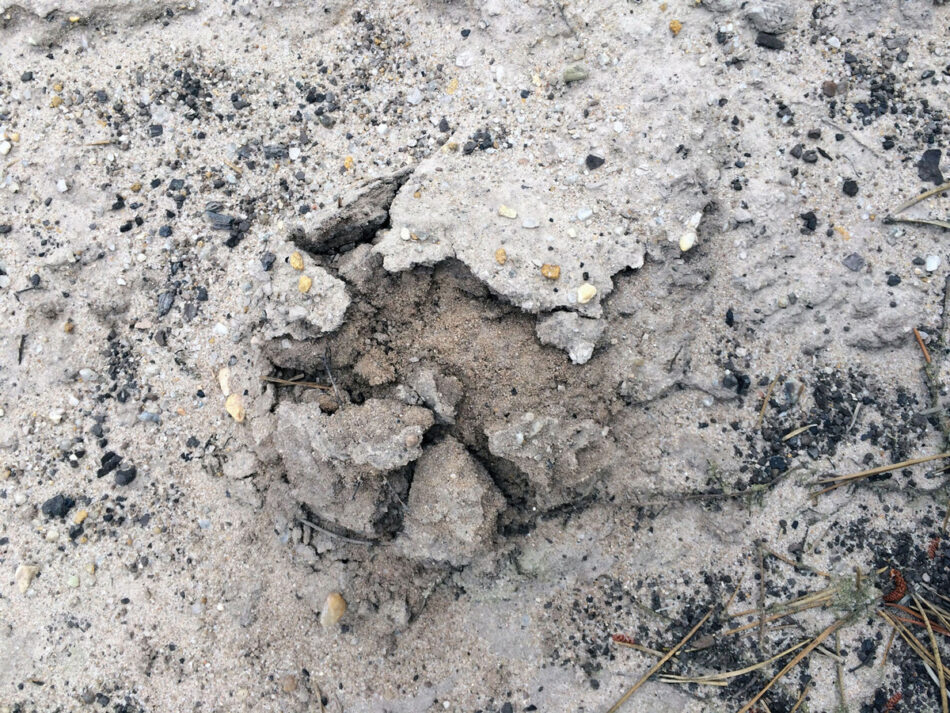
AT
Scale continues to be really important. When I’m talking about indeterminacy in relation to scale, it relates to the fact that we don’t know what’s going to happen in terms of the scale. The scale isn’t made through a set of histories of relationships. That’s just how big and small we want to think about a phenomenon—we don’t just want to assume that every small phenomenon has some orderly relationship to the big. Indeterminacy means we have to wait and see what’s going to happen. That is so important when we’re thinking about landscapes. We must remember how artificial scalability is and how much work it takes when we’re thinking about human artifacts of various sorts. Instead, it might make more sense to focus on livability, and not just for humans. Livability requires taking nonscalability seriously as a principle for more-than-human relations. The rhizosphere is great to think with for embarking on this project.
That’s one effect of scale. The other is completely needlessly bringing so much stuff from one part of the world to another.
RE
I couldn’t agree more—actually the scaling up of our profession is what drew me from practice into academia, because I was educated at a time when “globalization” wasn’t a dirty word; 20 years ago, the modus operandi was: “You can work anywhere, you can go anywhere.” Dubai was popping up, China was spreading its urbanity, and there was a lot of optimism around endless expansion in the design fields.
AT
In a world in which we are constantly asked to accept the optimism of endless expansion, it’s really important to look around and consider the consequences for livability—for humans, as well as for all the species upon which we depend as companions. As Julie Livingston has explained, growth can be “self-devouring”; that is, it can create spaces in which we can no longer live, for example, by making clean drinking water unavailable. Perhaps noticing something as small and as little considered as the interactions of roots and fungi can make us remember that endless expansion has unintended consequences, and we had better start paying attention.
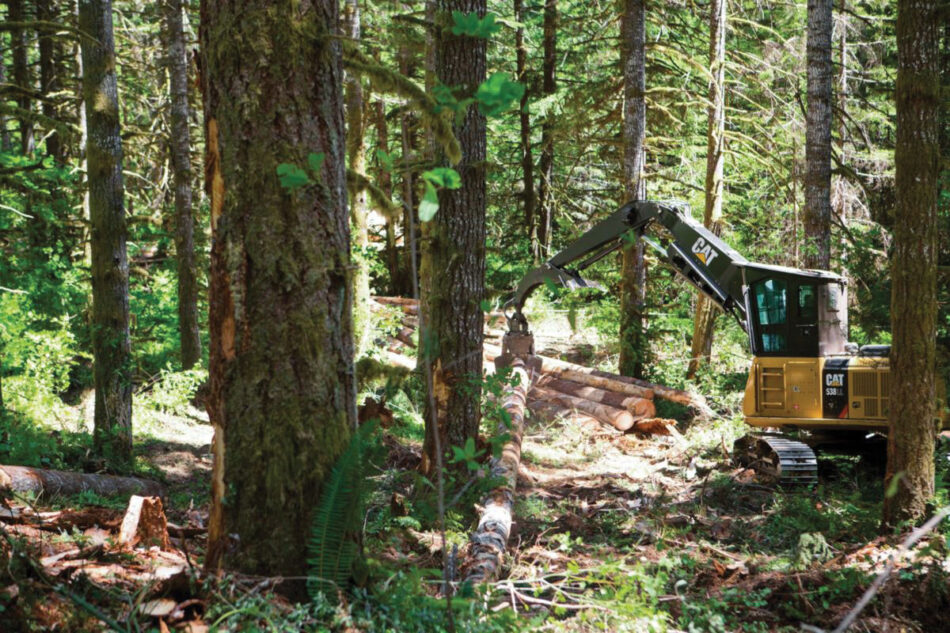
Anna Tsing is professor of anthropology at the University of California, Santa Cruz, and the Niels Bohr Professor at Aarhus University in Denmark, where she codirects Aarhus University Research on the Anthropocene. She is the author of In the Realm of the Diamond Queen: Marginality in an Out-Of-The-Way Place (1993), Friction: An Ethnography of Global Connection (2004), and The Mushroom at the End of the World: On the Possibility of Life in Capitalist Ruins (2015).
Rosetta S. Elkin is assistant professor of landscape architecture at the Harvard University Graduate School of Design and associate at the Arnold Arboretum of Harvard University. Her research articulates an expanded definition of plant life as a means to explore large-scale environmental risk. Her most recent publication, Tiny Taxonomy: Individual Plants in Landscape Architecture (2017), indexes three design installations while exploring the changing nature of fieldwork and the role of individual plants in practice. Elkin is a 2018 fellow of the American Academy in Rome.
